Differences of RGB, RGBW and RGBWW LED strips
LED strips are used for different purposes, and every year the choice is getting wider. In stores most often offer RGB RGBW RGBW RGBW - not everyone knows the difference between each type, so it is worth to understand the features to buy exactly what will suit you best.

LED Strip RGB, RGBW and RGBWW
These options are polychrome, that is, many colors and can glow in different shades. This provides great opportunities in the design of interior space and highlighting of various niches or furniture.
In fact, LED strip - a set of resistors and semiconductors, located on a printed circuit board, which is often white to improve the reflective properties.
The first thing to do is to understand the differences between multi-color strips and single-color strips to understand the general principles of operation. In monochrome tapes white glow gives a phosphor - a compound that converts electricity into radiation. The light from this version is soft and uniform. Backlighting creates a comfortable atmosphere for the eyes.
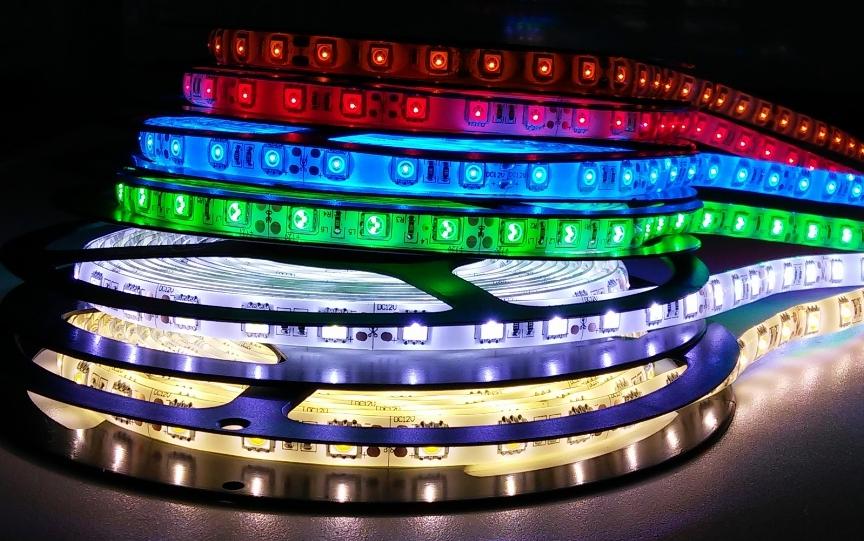
In multicolor versions, all shades are formed by a combination of red, blue and green colors (including white). Since different ribbons use different LEDscharacteristics may vary, it is difficult to get the same white light as in the monochrome version, but in general it is of good quality.
In this clip explains the peculiarity of the tape RGB + W.
Deciphering
Each type has its own characteristics, which are not difficult to recognize by the marking. Therefore, it is worth to understand the designations in order to navigate in the subject and choose the variety that will suit the best:
- RGB - The simplest solution, which was the first to appear and is still in use today. It has three colors R - red, G - green and B - blue. A full color system that consists of three monochrome channels that connect independently of each other, providing a wide range of settings and a large number of possible shades.
- RGBW is an advanced ribbon that adds cool white (White) with a color temperature of 6000K to the three standard colors. If we compare RGB and RGBW the difference is one diode, but due to it the number of shades becomes even greater, it is also possible to include pure white light if necessary.
- What RGBWW means. There is another white LED, but unlike the first, it has a warm white light with a temperature of 2700-2900 K.
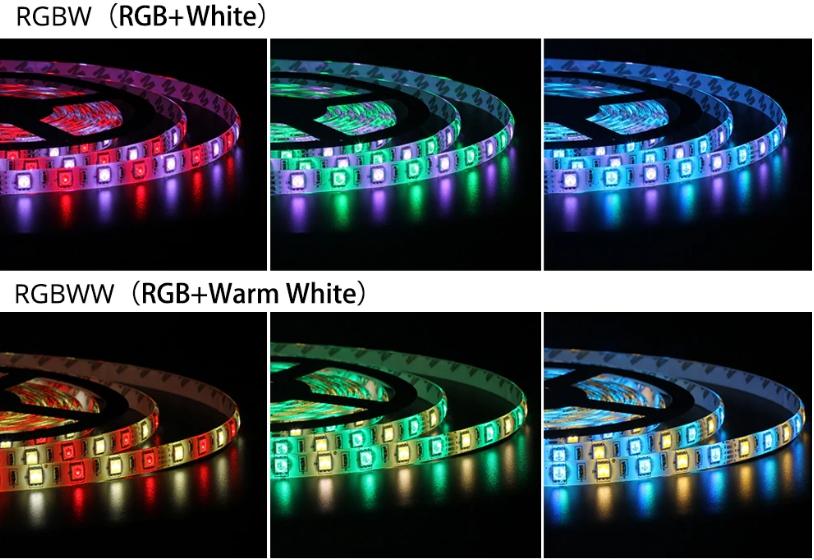
A variant of RGBWWW has appeared, but it is not yet on sale, most likely another shade of white is added there.
The main differences are
Ribbons with three colors are usually single-row and the simplest and have four contacts - one for each color and a common plus. If one or two white elements are added, the contacts are also added. Therefore, when connecting the different types, you should select the right connectors, if you take the wrong ones, you will not be able to connect the backlight.
If you look at the appearance of RGBW and RGBWW what is the difference with the standard RGB can be seen immediately. The first version has one additional LED, the second has two. And, they can be combined in different ways:
- White LEDs and RGB are placed next to each other. Since for uniform illumination you want them to be close, the tape is often made double-row. This can cause inconvenience during installation if a standard width aluminum profile is used.
- All the diodes are in one body, but separated inside. This variant gives a uniform light, and the size of the strip is almost the same as the standard one.
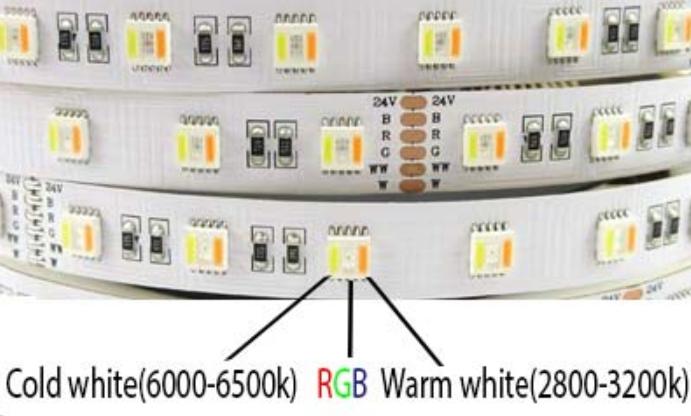
Features of color, scope of application
When choosing one of the options you need to understand for what purposes it will be used. From this depends on the choice, because the chromaticity of each type has peculiarities:
- RGB - the simplest solution with a three-color module. Gives a lot of shades, and also can shine white light. But it is not distinguished by purity and brightness, often can be yellowish. Therefore, it can be used for decorative lighting and decoration of rooms, furniture and other structures. If you need white light, it is better to lay next to a monochrome white version, it will turn out much better.
- RGBW includes cool white light, which increases the number of possible shades and allows you to adjust the lighting very precisely. And if you need general lighting, you don't have to put in two matrices, the white light is there. But you have to consider that it is cold, and this is not very comfortable for the eyes when you are in the room for a long time.
- RGBWW with two white light modules is suitable both as general lighting and for backlighting. The number of shades is the greatest, so you can achieve the perfect result in any room or outdoors. But most importantly, you can adjust the temperature of the light in the room and adjust it so that you can work or rest.
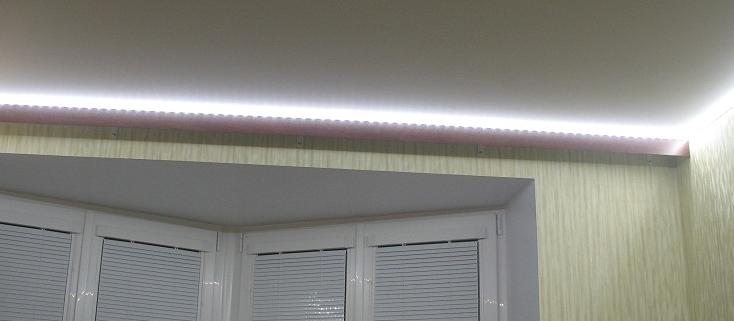
If you need to make street lighting, it is worth choosing models with enhanced protection against moisture and temperature fluctuations. Usually the tape is covered with silicone, its price is higher, so it does not make sense to buy such a tape in the rooms.
How to connect these varieties
Connect The tape can be connected with your own hands, there are no difficulties in the work. The main thing is to understand the process and follow the diagram, so as not to mix things up and not to burn equipment. Beforehand, you need to buy everything you need - the tape itself, the power supply (to match the stripMost often it is used at 12 V, less often at 24 V). Also to work you need a controller, and if the length is 5 m or more, then put the signal amplifier. Follow the instructions:
- RGB ribbon is the easiest to connect, as it has only 4 pins. First cut off First of all, cut off the tape according to the specified line, then connect the connector or solder the contacts, which is undesirable. From the ribbon, lead the wires to the controller as shown in the diagram below, and connect to the power supply. It is worth checking the operation to make sure everything is OK.
- RGBW is connected in almost the same way with the difference that there is an additional contact. The controller is also suitable universal, you can connect different types of ribbons.
- RGBWW is connected by a six-pin connector and you should not use a universal controller for it, it is better to buy a specially designed model. It is more expensive, but the effect will be much better.
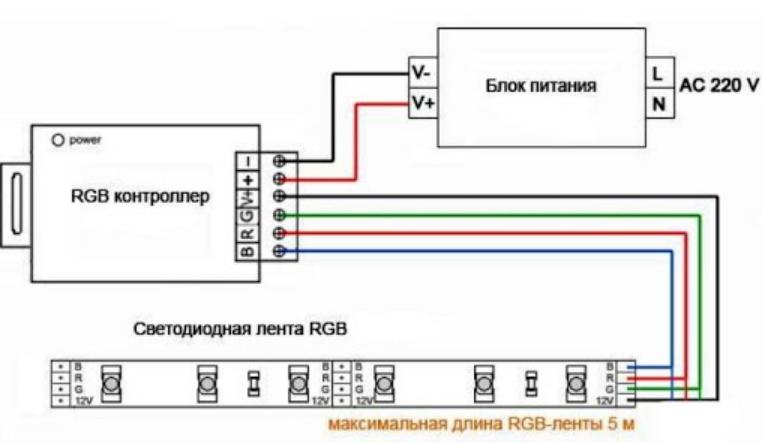

When installing it is important to be careful to snap the connector tightly. Place the controller and other controls in an easily accessible location.
Choosing a LED strip is not difficult if you know the basic features of each brand. When buying, pay attention to the quality, the diodes should be arranged evenly, the soldering is always neat and clear, without overlap. Wiring according to the diagram is simple and even an inexperienced person can cope with the work.